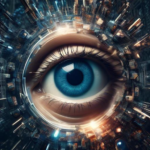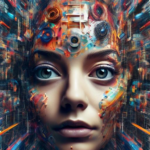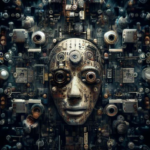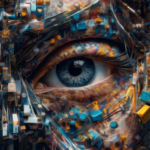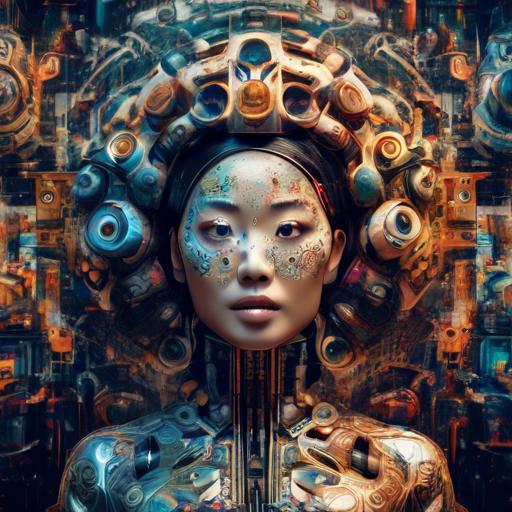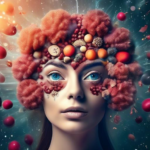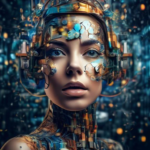In the digital renaissance of the 21st century, a new muse has emerged—Artificial Intelligence. With its enigmatic touch, AI transforms pixels into profound stories and breaths life into binaries, creating art that dances on the edge of innovation and tradition. As creators and entrepreneurs ride this wave of technological marvel, they face a delicate conundrum: balancing the scales of profit and ethics. In a world where algorithms can conjure masterpieces at unimaginable speeds, the heart of art beats in the rhythm of human conscience. This article invites you on an enlightening journey to explore how we can harmonize the pursuit of profit with ethical integrity in the burgeoning realm of AI art. We’ll delve into foundational principles, share insights from trailblazers, and illuminate pathways that honor both creativity and responsibility. Together, let’s sculpt a future where art, technology, and humanity flourish in tandem.
Table of Contents
- Striking the Perfect Harmony: Merging Artistic Integrity with Commercial Success
- Understanding the Ethical Landscape: Navigating Morality in AI Art
- Mindful Monetization: Strategies for Profitable yet Principled AI Creations
- The Role of Transparency: Building Trust in AI-Generated Art
- Empowering Artists: Fair Compensation in the Age of AI
- Community Engagement: Fostering Ethical Practices through Collaboration
- Balancing Innovation and Tradition: Respecting Artistic Heritage in AI
- Sustainable Practices for Long-Term Success in AI Art
- Ethical Marketing: Promoting AI Art with Integrity and Respect
- Final Thoughts
Striking the Perfect Harmony: Merging Artistic Integrity with Commercial Success
In the evolving world of AI art, finding a balance between **artistic integrity** and **commercial success** can be akin to walking a tightrope. Both elements can coexist harmoniously if approached with a strategic mindset and a nurturing spirit. Artists often feel the pressure to compromise their unique vision to suit market demands, but it’s possible to create work that is both authentic and profitable.
The first step in achieving this balance is through meaningful engagement with your audience. Here’s how:
- Create a **narrative around your art** that resonates with people. Share the story of how you developed a particular piece, the tools you used, and the thoughts that drove your creativity.
- Leverage **social media platforms** to build a community around your work. Regular updates, sneak peeks, and interactive sessions not only keep your audience engaged but also attract potential buyers who value the depth and personality you bring to your work.
- Offer **customizable art pieces**. By allowing customers to tailor certain aspects of your AI-generated art, you create a heartfelt connection that translates into commercial value without diluting your artistic vision.
Understanding the market dynamics is equally important to maintaining your artistic sovereignty and financial health. Here’s a straightforward table to navigate this:
| Element | Artistic Integrity | Commercial Success |
|---|---|---|
| Brand Story | Unique Narratives | Market Resonance |
| Engagement | Interactive Sessions | Audience Growth |
| Customization | Artistic Flexibility | Customer Loyalty |
For artists leaning heavily on the commercial aspect, remember that **ethical considerations** play a crucial role. AI-generated art poses unique ethical challenges such as data privacy, authenticity, and copyright issues. Ensure your use of AI tools adheres to ethical standards by:
- **Respecting data privacy**: Use licensed datasets that don’t infringe on personal data.
- **Ensuring authenticity**: Disclose when AI tools are used to differentiate between human-created and AI-generated content.
- **Navigating copyright issues**: Avoid using copyrighted materials as part of your AI models unless explicitly permitted.
By keeping these considerations in mind, you lay a foundation that respects the truth of your artistry while embracing the opportunities provided by the commercial market. It’s all about striking the right chord—a perfect harmony.
Understanding the Ethical Landscape: Navigating Morality in AI Art
In the realm of AI-generated art, the tension between profit and ethics often feels like a tightrope walk. To strike a balance, it’s crucial to deeply understand the primary ethical concerns. **Artist Attribution**, **Originality** issues, and the potential for **Bias** in AI algorithms are just a few of the pressing dilemmas that creators and businesses must navigate.
- Fair Compensation: Ensuring that human artists whose works train AI models receive appropriate compensation.
- Diversity and Inclusion: Encouraging the development of inclusive AI tools that reflect a broad spectrum of cultures and perspectives.
- Transparency: Being open about how AI-generated art is created and which datasets were used to train the models.
For instance, the principle of **transparency** can significantly impact public perception. By openly communicating the methods and datasets used in AI art creation, you build trust and invite constructive dialogue. Likewise, **fair compensation** models can be innovatively structured—consider offering artists **royalty stakes** in the generated works, much like musicians receive from streaming platforms.
| Ethical Principle | Practical Action |
|---|---|
| Transparency | Disclose training datasets and creation methods |
| Equity | Implement fair compensation schemes |
| Inclusiveness | Develop culturally sensitive AI models |
Another vital aspect is balancing **profit motives** against the backdrop of **ethical AI practice**. This might involve setting up an **ethical review board** or adopting **certified ethical frameworks**. These initiatives not only ensure adherence to ethical norms but also serve as markers of corporate responsibility, potentially translating into long-term consumer trust and profitability.
Ultimately, by prioritizing ethics, you’re not just following a moral compass—you’re navigating a sustainable path that harmonizes artistic integrity with financial gain. This dual commitment can transform the AI art landscape into a space where innovation and ethics coexist, enriching creative culture while fostering a fairer, more inclusive art world.
Mindful Monetization: Strategies for Profitable yet Principled AI Creations
Walking the tightrope between profitability and ethical integrity in AI art can be a daunting endeavor. To foster mindful monetization of AI creations, consider integrating sustainable and ethical principles without compromising financial viability.
First, **transparency** is paramount. Clearly communicate the role of AI in your art. Make sure your audience knows how much of your creation is human-crafted and how much is machine-generated. This builds trust and cultivates a loyal customer base. **Ethical transparency** involves disclosing the usage of any input datasets, algorithms, and sources of inspiration, ensuring there isn’t inadvertent plagiarism or misuse of data.
Consider incorporating the following ethical strategies:
- **Fair Compensation:** Ensure all creatives and contributors are fairly compensated.
- **Data Privacy:** Respect and protect the data privacy of any human subjects involved in the creation process.
- **Inclusive Design:** Strive for diversity and inclusion in training datasets to prevent biased outputs.
Monetization methods should balance profit and principles. Offer subscription models or tiered pricing to democratize access to your AI art. Utilize platforms that support **sustainable practices** and **ethical funding sources**. Interspersing curated, limited-edition pieces can elevate both value and exclusivity, ensuring a continuous stream of income without resorting to mass production.
For a quick comparison, here’s a table illustrating different monetization strategies alongside their ethical considerations:
| Monetization Strategy | Profitability | Ethical Consideration |
|---|---|---|
| Subscription Model | High | Ensures continuous, balanced access |
| Single Sale | Moderate | Enable transparency and fair pricing |
| Limited Edition | High Potential | Preserve exclusivity and value |
By melding financial acumen with principled ethics, you not only cultivate a reputable brand but also contribute positively to the larger ecosystem of digital art.
The Role of Transparency: Building Trust in AI-Generated Art
In the dynamic realm of AI-generated art, transparency is not just a virtue but a necessity. Building trust requires clarity in how AI models function, the data they use, and the intent behind their creation. This transparency is the cornerstone that bridges the gap between ethical considerations and profit goals.
Ways to Foster Transparency:
- Open Disclosure: Clearly state the involvement of AI in the creation process. Artists and platforms should include information about the tools and algorithms used.
- Data Usage: Provide insights on the datasets that feed the AI. This includes the sources of the data, its diversity, and any biases it may contain.
- Interactive Processes: Allow users to see and understand how tweaks in input can lead to different outputs in the art generation process.
Transparency paves the way for an informed audience, fostering a sense of trust and appreciation. Users are more likely to support and invest in AI-generated art when they understand the ethical frameworks and the creative processes behind it. This openness doesn’t just build trust; it strengthens the entire ecosystem by promoting responsible innovation.
| Feature | Benefit |
|---|---|
| Algorithm Information | Increases user awareness and trust |
| Data Source Disclosure | Promotes ethical standards |
| User Interaction | Enhances engagement and understanding |
Balancing profit with ethics means informing your audience, choosing integrity over secrecy, and operating with an open-source mindset whenever feasible. When creators and platforms prioritize transparency, they don’t just meet ethical standards but often find themselves rewarded with greater loyalty and enthusiasm from their audience.
Empowering Artists: Fair Compensation in the Age of AI
The rise of AI-generated art has opened up unprecedented opportunities and challenges. While AI can democratize creativity by providing artists with powerful tools, it also raises critical questions about fair compensation. Artists invest considerable time and creative energy into their work, and it’s essential to ensure they are duly rewarded.
- Attribution: Clear attribution ensures that artists receive recognition for their creative input, even when algorithms play a significant role.
- Revenue Sharing: Implementing fair revenue-sharing models between artists and AI developers can create a balanced ecosystem.
- Licensing Agreements: Establishing robust licensing frameworks helps artists retain control over their creations and receive appropriate compensation.
Furthermore, aligning profit motives with ethical considerations is crucial. The potential for exploitation is high if corporations prioritize profit over artists’ rights. **Transparency** in how AI tools incorporate and utilize artists’ work helps mitigate exploitation risks. Community-driven initiatives and open communication channels are also essential in creating equitable standards.
| Consideration | Action |
|---|---|
| Clear Attribution | Credits on all platforms |
| Revenue Sharing | Equitable split of profits |
| Licensing | Formal agreements |
Trust and accountability should be at the core of any AI art initiative. Establishing industry standards, such as ethical guidelines and best practices, encourages responsible AI use. By actively engaging with stakeholders—artists, developers, and consumers—it’s possible to shape a future where AI enriches creativity without undermining the value and rights of the creators.
Community Engagement: Fostering Ethical Practices through Collaboration
In the realm of AI art, striking the right balance between profit and ethical practices calls for community collaboration. AI artists, developers, and enthusiasts must come together to craft guidelines that ensure both creative expression and fair business practices. This fosters a sustainable ecosystem where innovation thrives while ethical standards are upheld.
To foster this balance, forming ethical review boards within AI art communities is crucial. These boards can provide oversight for projects, ensuring that they align with community values and ethical guidelines. By involving a diverse group of stakeholders, from artists to technologists, the review process can capture a wide range of perspectives, making the outcome more balanced and representative.
- Encourage transparency in AI model training sources
- Promote fair pricing models for AI-generated artwork
- Implement strong data privacy policies
Another powerful approach is to establish open forums and regular meetups where AI artists can share best practices and discuss ethical dilemmas they face. These gatherings can provide a supportive space to navigate the complexities of ethics in art, offering collective wisdom and innovative solutions.
| Ethical Practice | Community Action |
|---|---|
| Transparent AI Training | Publicly disclose training data and methodologies |
| Equitable Profit Sharing | Implement royalties for contributors |
| Inclusive Development | Involve diverse voices in the development process |
Balancing Innovation and Tradition: Respecting Artistic Heritage in AI
In the fascinating whirlwind of AI-generated art, it’s essential to find a balance that cherishes both technological advancements and the rich tapestry of human artistic endeavors. **Honoring traditional art forms** in the digital age is not just a matter of respect but a necessity to maintain the ethical fabric of creative industries. Striking this equilibrium can prevent cultural erasure and ensure that the soul of artistic heritage remains unscathed as profits rise.
- **Integrate Traditional Techniques**: AI can learn from historic art movements and renowned artists, embedding classic techniques into its algorithms. This not only pays homage to the masters but also enriches the AI’s creative output.
- **Collaborate with Human Artists**: Use AI as a tool to augment the creative processes of living artists rather than replace them. This symbiotic relationship can lead to innovative artworks that respect and elevate human creativity.
- **Ethical Licensing**: Implement licensing models that ensure artists are fairly compensated when their work informs AI training datasets. This encourages ethical practices and sustains the livelihoods of traditional artists.
Below are a few examples showcasing the delicate dance between artificial intelligence and traditional art forms:
| Traditional Art Form | Modern AI Application |
|---|---|
| Impressionism | AI-generated landscapes with Van Gogh’s brushstroke patterns |
| Classical Realism | Portraits enhanced with AI-driven lighting and texture techniques |
| Abstract Expressionism | Dynamic, algorithmically-created compositions evoking Pollock’s style |
Ensuring these strategies are anchored in **fair practices and inclusivity** helps bridge the often-contentious gap between innovation and tradition. Crucially, AI developers and artists alike must engage in ongoing dialogues, where transparency and mutual respect drive the development of ethically sound AI art.
Sustainable Practices for Long-Term Success in AI Art
Incorporating sustainable practices into the creation and commercialization of AI art is essential to ensure long-term success. Artists and developers must be mindful of the environmental and societal impacts of their work. Here are some actionable strategies to foster ethical and sustainable AI art practices:
- Utilize Energy-Efficient Algorithms: Opt for AI models that are optimized for energy efficiency. Prefer models requiring less computational power, helping to reduce the carbon footprint associated with AI processing.
- Source Renewable Energy: Power your AI projects with renewable energy sources whenever possible. This can include using solar, wind, or other sustainable energy solutions.
- Cloud Computing Choices: Choose cloud computing providers that have strong commitments to sustainability. Some providers offer green options or have made significant strides towards reducing their environmental impact.
Respecting intellectual property and ensuring transparency in AI art creation are not just ethical imperatives but also contribute to the credibility and longevity of the field. Here are a few principles to guide ethical AI art practices:
- Provide Proper Attribution: When training AI models, use datasets that have clear usage rights. Always give proper credit to original creators of the content used for training.
- Be Transparent: Clearly communicate how AI-generated art is created. Transparency helps build trust with audiences and collectors, establishing a knowledgeable community around your art.
- User Consent: For collaborative AI art projects, ensure that human participants have given informed consent. Detailed information on how their input will be used fosters a trustworthy relationship.
| Strategy | Benefit |
|---|---|
| Energy-Efficient Algorithms | Reduces carbon footprint |
| Renewable Energy | Minimizes environmental impact |
| Transparency | Builds trust and credibility |
Advancing sustainability and ethical considerations in AI art not only aligns with growing societal expectations but also positions artists as forward-thinking leaders. By adopting these practices, artists can ensure that their pursuit of profitability does not overshadow the need for ethical integrity, resulting in a more balanced and sustainable future for AI art.
Ethical Marketing: Promoting AI Art with Integrity and Respect
To responsibly navigate the burgeoning field of AI art, businesses must prioritize ethical practices that balance commercial interests with the respect and integrity of the creative community. Transparency is key; it’s essential for companies to openly communicate the use of AI in their art production. This involves clearly labeling AI-generated works and ensuring that customers are well-informed about the origins and methods behind the art they are purchasing.
In addition to transparency, it’s crucial to respect the intellectual property rights of all artists involved. This means not only adhering to copyright laws but also implementing fair compensation models for human artists whose work might be used to train AI systems. Some strategies include:
- Licensing agreements
- Revenue-sharing models
- Attribution in promotional materials
Further, ethical marketing involves a commitment to diversity and inclusivity. AI systems should be trained using datasets that represent a wide range of cultures, perspectives, and artistic styles. This ensures that the resulting AI-generated art is not only innovative but also reflective of a global artistic landscape. Companies should strive to support underrepresented artists and communities, providing platforms and resources to amplify their voices.
Here’s a quick comparison of best practices vs. common pitfalls in ethical marketing of AI art:
| Best Practices | Common Pitfalls |
|---|---|
| Clear labeling of AI-generated art | Misleading marketing about the origins of the artwork |
| Fair compensation for human artists | Exploiting artists’ work without attribution or payment |
| Diverse and inclusive training datasets | Biased datasets that narrow the scope of creativity |
Ultimately, ethical marketing in the realm of AI-generated art is about fostering trust and fostering a responsible, artistic ecosystem. By adhering to these principles, businesses can pursue profitability without compromising their ethical standards, ensuring a sustainable and respectful approach to AI art.
Final Thoughts
As we continue to navigate the evolving landscape of AI art, let us remember the importance of balancing profit and ethics. By incorporating ethical principles into our creative processes, we can help shape a future where technology serves humanity in a responsible and sustainable way. Let’s continue to push the boundaries of innovation while staying true to our values. Together, we can create a world where art and technology coexist harmoniously for the betterment of all. Embrace the challenge, trust your instincts, and let your creativity lead the way. The future of AI art is in our hands – let’s make it a masterpiece.


